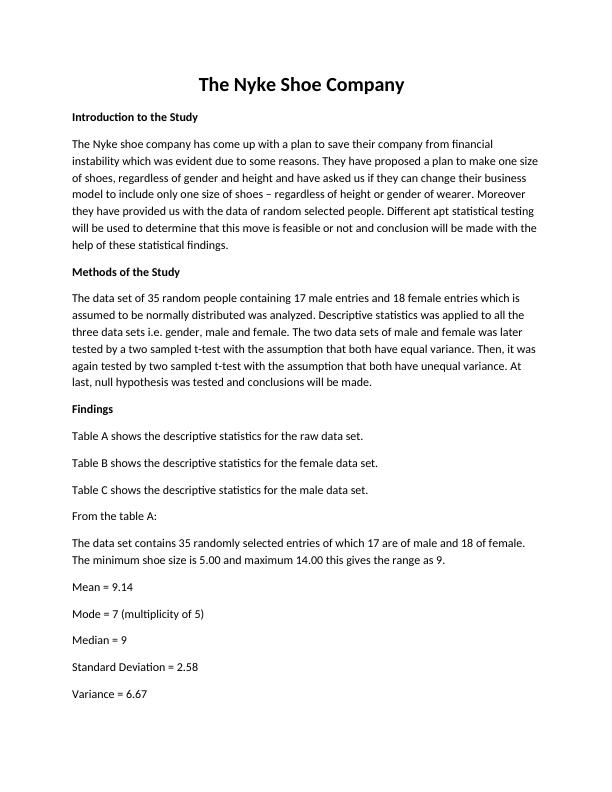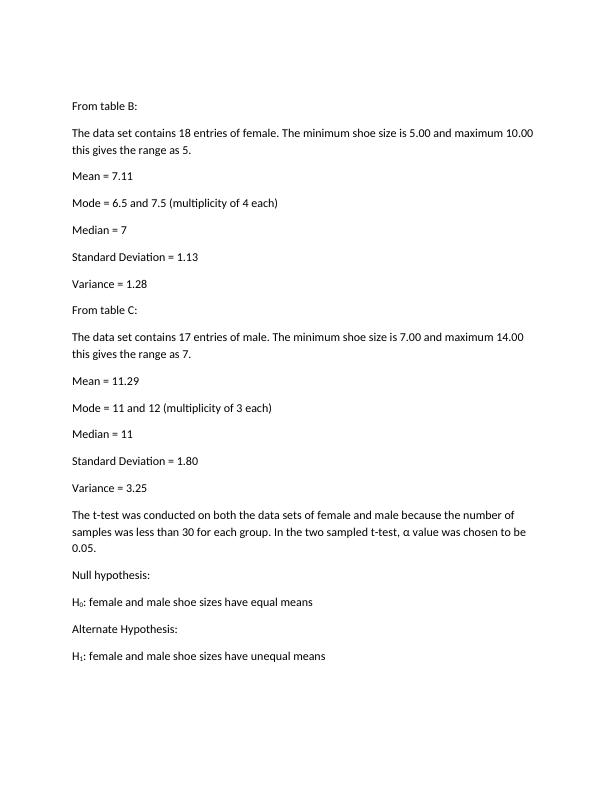Ask a question from expert
Case Study of The Nike Shoe Company
10 Pages1449 Words866 Views
Added on 2019-09-19
Case Study of The Nike Shoe Company
Added on 2019-09-19
BookmarkShareRelated Documents
End of preview
Want to access all the pages? Upload your documents or become a member.
Statistical Tools and Techniques - Doc
|17
|2234
|21
Statistics Assignment - Substantive Significance
|8
|740
|68
Statistics: Confirmatory and Exploratory Analysis
|9
|1486
|41
Statistics: Analysis and Results
|6
|725
|66
Statistics - Two Sample t-test with Known and Unequal Variances
|6
|687
|236
Work Time Return in Knee Replacement & Interpretation
|17
|1865
|63


